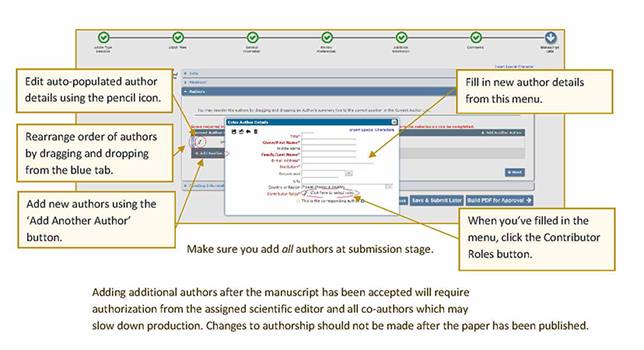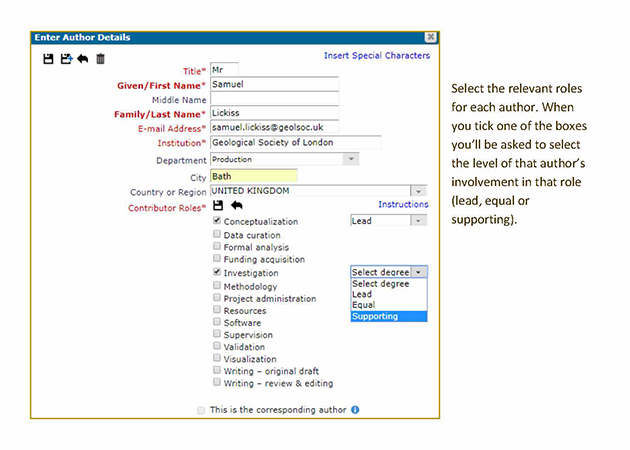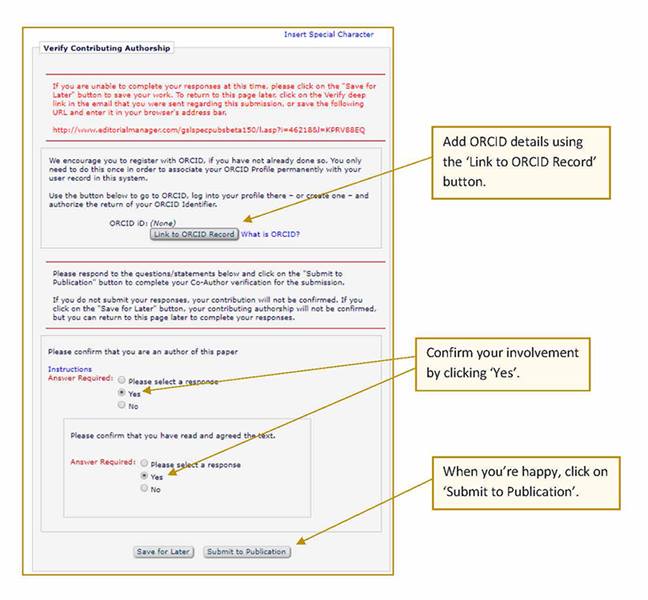Who qualifies as an author?
To include someone as an author on your paper, they must have made a substantial scientific contribution to the study. People who have contributed in other capacities, e.g. through language editing, should be listed in the acknowledgements, but wouldn’t normally count as an author. There are two categories of author when you submit your paper: corresponding and contributing authors. For further information on authorship, please see the section on the Society’s publication ethics page, which is based on best authorship practices outlined by the Committee on Publication Ethics.
Corresponding author
If you’re submitting the paper to one of our journals or books via our online submission system, Editorial Manager, you are probably the ‘corresponding author’. You will be our contact through the production processes involved in publishing your work. You will be our first port of call for queries and proof corrections. In most cases it will also be your email address that we publish as the correspondence contact on the paper, but this does not have to be the case. We can list someone else on the published paper as the author for correspondence (in addition to or in place of you). If you include more than one email address for correspondence on your published paper, you should note that our system recognizes only the first of these email addresses and uses this address for notification of e-prints upon publication.
Contributing author
When you upload the files for your submission, the system should auto-populate the author list using information from the uploaded article PDF. Your co-authors on the paper will populate as ‘contributing authors’. You do have the opportunity to edit author fields and add new authors at the Manuscript Data stage before submitting.

Contributing author roles The Geological Society requires authors to indicate their roles in the study, using roles from a predetermined list called CRediT taxonomy, a system developed by CASRAI. The roles include such things as ‘conceptualization’, ‘data curation’ and ‘funding acquisition’ and each author can have multiple roles. Detailed descriptions of the contributor roles and their purposes can be found here. When you click on the Contributor Roles tab an expanded menu is opened.

When you complete submission of the manuscript, all listed authors will receive an email containing links asking them to confirm or deny their involvement in authorship. It’s important that they do this as soon as possible as it could delay manuscript production.
ORCIDs
Many of our authors will already have an ORCID identifier and the Society encourages authors to publish using their ORCID. If you don’t have one and are unsure what it is, ORCID enables researchers to have a unique identifier to distinguish them from others with the same name. It supports automated linkages between a researcher and their professional activities ensuring that their work is recognized.
When the corresponding author enters in their ORCID it will be permanently associated with their profile in Editorial Manager, so only needs to be done once.
Each co-author on the paper, however, is responsible for filling in this field themselves. When an author is asked to confirm their involvement in the paper they will be taken to Editorial Manager. Here they will be given the opportunity to link the paper to their ORCID account.

When you click on the ‘Link to ORCID Record’ button you will be taken to ORCID’s login page where you can sign in:

Best wishes
The Production Team